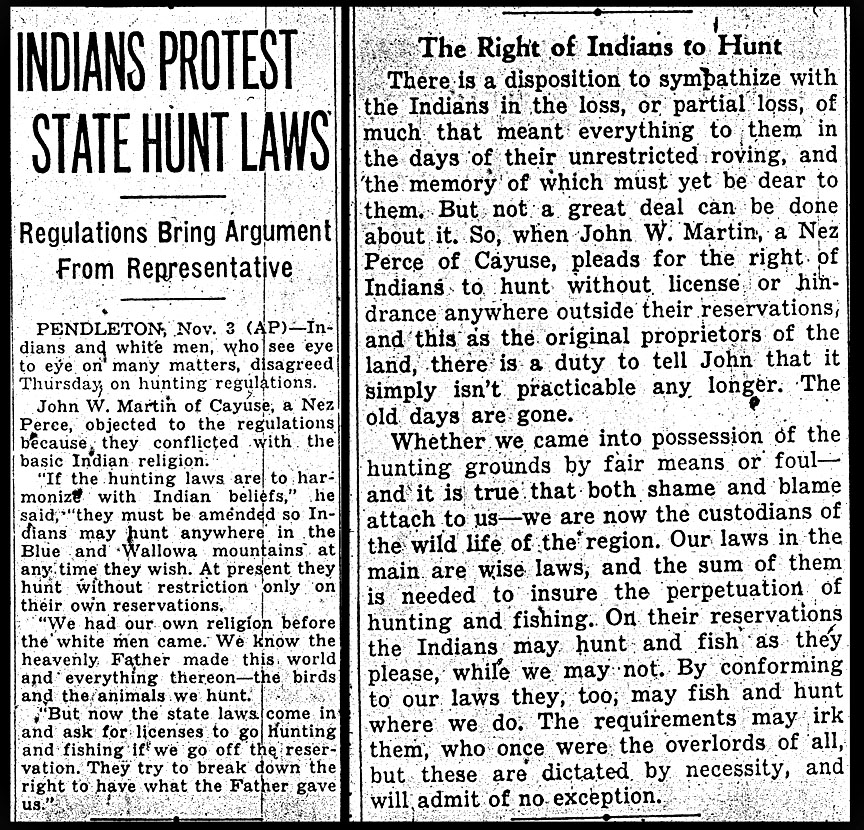- Catalog No. —
- Oregonian, November 4 & 5, 1938
- Date —
- November 4 & 5, 1938
- Era —
- 1921-1949 (Great Depression and World War II)
- Themes —
- Environment and Natural Resources, Government, Law, and Politics, Native Americans
- Credits —
- Oregon Historical Society
- Regions —
- Northeast
- Author —
- The Oregonian
Indian Hunting Rights
As John Martin points out in this newspaper article, subsistence and spirituality are intimately intertwined in Native cultures. In addition to providing physical sustenance, deer and elk meat have long been important components of traditional ceremonies like first food feasts, funerals, and naming ceremonies. Regulations that limited Indian hunting opportunities, therefore, had both economic and spiritual repercussions.
The accompanying Oregonian editorial makes it clear that wildlife managers and other non-Indians considered the regulation of hunting solely as a conservation measure, needed to ensure the long-term maintenance of the resource. They considered Indian hunting unregulated and thus a threat to game populations.
The rhetoric of scientific conservationism, however, obscured the fact that hunting and fishing regulations were as much social as they were biological. New regulations usually represent a reallocation of the resource. Indian hunters, for example, hunted year-round for both ceremonial and subsistence purposes. State hunting regulations that limited Indian hunters to certain seasons, hunting grounds, and bag limits not only interfered with traditional ceremonial practices as Martin points out, they also represented a reallocation of game from Indian subsistence and ceremonial hunters to non-Indian sport hunters.
Written by Cain Allen, © Oregon Historical Society, 2003.
